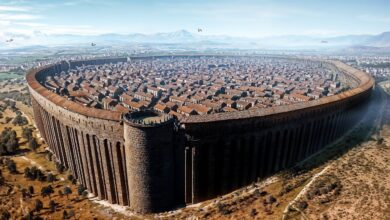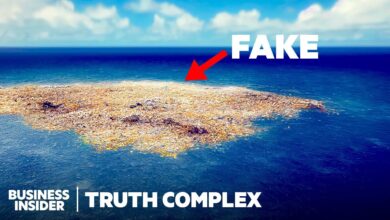This Ki.lled All But 1,000 Humans 900,000 Years Ago

In 1972, a groundbreaking study claimed that between 35,000 and 65,000 years ago, humans experienced a genetic “bottleneck,” meaning that some event caused the population to decline so dramatically that it significantly reduced the genetic diversity of humans today. At the time, the cause was unknown, but by the 1990s, scientists began to link the event to a massive volcanic eruption that occurred 74,000 years ago at Lake Toba in Indonesia.
The eruption is believed to have been 10,000 times more powerful than Mount St. Helens and devastated the surrounding area, causing severe climate change that pushed humans to the brink of extinction, leaving only about 3,000-10,000 survivors.
However, in recent years, this view has been challenged as studies have shown that while some populations may have been affected, many others living near Lake Toba survived, raising questions about the true extent of the threat. New climate models also suggest that the impact of Lake Toba was not as great as previously thought, and that the timing of the eruption did not coincide with a period of population decline.
As late as 2023, a more advanced study found a much larger bottleneck that occurred between 800,000 and 900,000 years ago, during the Calabrian period of the Ice Age. This event did not affect modern humans, but rather our early ancestors. By analyzing more than 3,000 modern human genomes, scientists found that our ancestors’ numbers dropped to just 1,280, meaning 98.7% of the population at the time became extinct.
This event can be compared to a meteorite hitting Earth today, killing 7.9 billion people. Our ancestors’ population fell to a very dangerous level and remained at a very low level for 117,000 years, fighting to survive in harsh conditions. Scientists also point out that very few ancient human fossils remain from this period, suggesting that it was an extremely difficult period for human survival.

The study also suggests that the individuals who survived this event may have evolved into Homo heidelbergensis, a common ancestor of Neanderthals and modern humans. Scientists believe that the “bottleneck” phenomenon could have accelerated evolution, causing the surviving population to become genetically distinct from the original population.
The cause of this event could have been a major climate change, specifically the mid-Pleistocene transition. This event lasted hundreds of thousands of years, during which the Earth shifted from thin ice age cycles lasting about 41,000 years to thicker ice age cycles lasting up to 100,000 years, putting enormous pressure on the environment.
The drop in CO₂ and geological change could have significantly altered the landscape, affecting species that lived at the same time as our ancestors. Fossils of mammals from this time have different isotopic levels, suggesting that they had to change their diets over a short period of time, and our ancestors may have been severely affected by their lack of control of fire and appropriate technology.
Research since 2023 has shown that this bottleneck may have occurred much earlier than originally hypothesized, more than a million years ago. Some scientists have also proposed that the bottleneck may have been caused by large migrations out of Africa, as the climate became increasingly harsh, forcing early humans to move. The harsh living conditions during these migrations, with lack of fresh water and food, meant that many individuals could not survive.
Although there is controversy and further research is underway, scientists hope to soon unravel the mystery of when and why the “genetic bottleneck” of our ancestors occurred.








